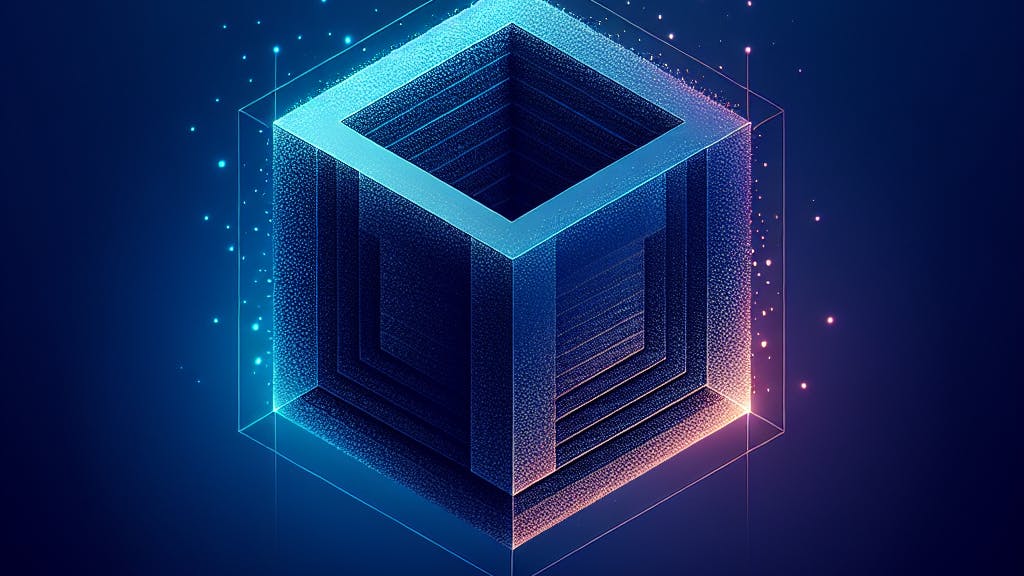Starting a small business comes with its share of challenges. Limited resources, finding the right balance between growth and quality, and the need for a strong online presence are all critical factors. Business automation has become a key tool in addressing these challenges, helping businesses streamline operations and maximize efficiency.
The past few years have been especially tough due to the COVID-19 pandemic. Lockdowns and changes in how people shop and travel have hit places like cafés and markets hard, leading to closures in 2020-2022.
But now, as the world is opening again, small businesses have a chance to reach their audience. To make the most of this, any business needs the right tools.
Business automation trends are always changing, so staying flexible is important. Two things that never change are the need to be efficient and the importance of connecting with potential customers. It might take some time, but there’s a step you can take right now: use a conversational chatbot. This tool helps with everyday tasks and shows customers you’re on the ball.
And here’s the thing — chatbot technology is always getting better. New and improved options, like smart AI assistants, are popping up all the time to help businesses keep up with the times.
In this article, we’ll dive into the world of chatbots — what they are, where they came from, and how they work. We’ll look at how chatbots help businesses, show real-life examples, and introduce an easy-to-use interface. You can integrate an AI assistant into your webpage and create a custom chatbot without any coding.
History of Business Automation
What is a Chatbot: Definition and Types
First thing first: what is a chatbot? Simply put, a chatbot is a program that simulates a conversation with a human. Various websites and services use chatbots to streamline customer support, generate leads, offer updates, take reservations, increase sales, and more. They save time by promptly addressing user queries or issues, even outside regular business hours.
Chatbots can range from simple to more complex, the first one being able to process only the most basic inputs. More complex chatbots are capable of adapting and learning, providing personalized and detailed responses.
Remember those windows that pop up when you’re browsing through a webpage, asking if you need help? Yes, those are chatbots, programmed to guide and assist you, and, maybe, motivate you to make a purchase.
The landscape of chatbots is broad, so there are quite a few options to choose from, both in terms of technical implementation and application areas.
| Technical Implementation | Application Areas |
| Rule-Based or Scripted Chatbots | Programmed to follow a pre-defined script. Sadly, this limits their ability to handle complex conversations. |
| Transactional Chatbots | Designed for handling transactions and providing information about products or services. |
| Machine Learning-Based Chatbots | Use machine learning algorithms to improve their responses over time. They are quite versatile thanks to the learning ability. |
| Customer Support Chatbots | These chatbots assist users with common customer support queries. |
| Natural Language Processing (NLP) Chatbots | Can understand and interpret human language. They analyze user’s input and generate appropriate responses. |
| Entertainment Chatbots | Created to tell jokes, play games, or simulate conversation for entertainment purposes. |
| Contextual Chatbots | Understand the context of a conversation, remember past interactions and use received information to craft personalized responses. |
| Language Translation Chatbots | These chatbots can translate text or speech from one language to another. |
| AI-Powered Virtual Assistants | Advanced chatbots that use AI technology to perform tasks and answer queries. |
| Marketing Chatbots | Integrated into social media platforms, websites, messengers, these chatbots collect leads and help convert them into paid customers. |
And many more!
Evolution of Chatbot Technology
Chatbots have been around since 1966; the first one was able of simple communications by responding to users input. It even passed the Turing test, which determines if the machine can emulate human conversations. In time, this ability has greatly improved and now differentiating between a human and machine in online conversations can pose a challenge.
Eliza was the very first chatbot, created by Joseph Weizenbaum in 1966. Eliza had a fairly simple way of functioning; she took the sentences users put in the computer and then paired them with a list of possible scripted responses. He created Eliza to be a fun caricature of human conversation. However, some people began confiding in her with their secrets.
Despite being just a bot, Eliza suddenly became a source of comfort for some individuals. But some people started sharing their secrets with Eliza, even though she is just a chatbot.
One of the firsts chatbots to incorporate AI was Dr. Sbaitso created by Creative Labs for MS-Dos in 1992. Still, it was only capable of limited interactions.
At the dawn of its development, chatbots could perform a limited number of actions. However, nowadays, the list of chatbot capabilities is a lot longer and much more complex:
- Tasks automation
- AI and Machine learning
- Multi-platform support
- Natural language understanding
- Deep customization
- Pre-build templates
- Analytics and reports
- User data collection
- Keywords recognition
The most well-known chatbots existing today are Siri, Google Assistant and Alexa, with Siri being the oldest; it really paved the way for other phone assistants. Developers primarily created these bots to assist people in their daily tasks, particularly those with special needs who may find typing difficult or require assistance in vocalizing on-screen content.
Now the possibilities of those assistants are far more wide; using only your voice or quick written input, you can ask for weather forecast, play audiobooks, set up timers, and many more.
Surely, we can’t discuss chatbots without mentioning ChatGPT, which took over the world in record time. OpenAI created it in 2021, and its main purpose is to generate written texts based on the inputs. Trained on vast amounts of data, it produces texts that are hard to separate from those written by humans. Furthermore, various industries widely use it, and it continues to advance as time passes.
The Role of Chatbots in Today’s Digital Landscape
As of 2023, roughly 1.5 billion people use chatbots to automate their business processes. Chatbots have become an integral part of communication between customers and services. They became so common, that users expect every webpage to have one and will look for it upon facing a question or an issue.
Let me give you an example from my life. As an introvert, I appreciate services that function without active human involvement.
Recently, I looked for a new hairdresser near my house to save some time and money. Among all the options the internet has offered, my winner was… the only hair salon that had online appointments scheduling via chatbot! Surely, it is a power to be reckoned with.
Here’s another number to back up the importance of having a chatbot. 62% of all users would rather use chatbot, instead of waiting for human agent. What does it mean to you, as an entrepreneur? By adding a chatbot to your webpage, you are more likely to quickly resolve customers issues, and thus keeping them in your marketing funnel. Long response time equals customers leaving for someone faster and more efficient.
What are Chatbots Used For
Now you know what chatbots are and that users will expect you to have one on the webpage. But is it really working?
Boosting Operational Efficiency
The chatbot can handle dozens of requests and inquiries without human involvement, drastically reducing the workload for a support team and saving human resources for more complex tasks and issues. The time-saving efficiency is so significant that back in 2018, estimates projected chatbots to save around 2.5 billion customer support hours by 2023.
All that saved time directly translates into better mental state, higher productivity, higher capacity for creative approach, and, of course, reduced business automation spendings.
According to reports from 2022, businesses that incorporate chatbot technology experienced a remarkable $11 billion in total cost savings. On customer support alone, chatbots can save businesses up to 30% of costs. This highlights the potential of chatbots to reduce operational costs and streamline business automation processes, making them an attractive option for companies looking to optimize their operations.
For example, let’s take a look at the health industry. A clinic started using a chatbot for scheduling appointments. This process helped reduce conflicts in scheduling and allowed the administrative staff to give more personalized attention to patients.
As a result, the clinic was able to save money on administrative costs and improve the patient’s overall experience. Globally, healthcare chatbots help save as much as $3.6 billion.
Chatbots not only enhance the processes they are coded to cover, but they also have a broader impact on overall marketing strategies. It enables data-driven decision-making. Imagine a real-estate company looking for a way to enhance their processes with more data. First, they deploy a chatbot on their webpage and other platforms. Now chatbot engages in conversation with any visitor, asking questions related to investment preferences, preferred locations, budget constraints, and desired property features. In time, it starts using collected information and general market trends to provide in-depth recommendations for clients.
Risk assessment modules analyze potential investment risks. They inform clients about these risks. This helps increase user engagement.
It also leads to higher customer satisfaction. Additionally, it reduces the risks of losing money.
Improving Customer Engagement
Engaging your customers is an important, but difficult task, as you need a lot of information about your target market to effectively interact with them. Thanks to chatbots, you can optimize the process of collecting users information and use it to build better marketing funnels and improve customer satisfaction.
One of the most effective ways to improve customer engagement is to help them navigate your webpage and search for the product they want. When you have a chatbot, customers can simply reach out to it, type the name of the product they are looking for and get it right away. This leads to better customer engagement and higher satisfaction rate.
After the initial interaction on your webpage, use chatbot to send notifications or reminders to keep customers updated about your offers and promotions. It is best achieved via messengers like Telegram, Viber, Facebook Messenger or other, where you can connect your chatbot to.
Also, chatbots are a great tool to help customers get a hang of your product. Implement short tutorials, FAQs or interactive quizzes to guide your customers through the difficult or confusing aspects of your product or service. Customers will be grateful for the assistance and will be more open to leave their information, buy something or even share their feedback. Use all the information to develop your business forward — chatbots nowadays come with a detailed and insightful analytics dashboards.
AI and Automation
The Benefits of AI Assistants
It’s impossible to talk about chatbots without mentioning AI assistants and it’s significance in the world of business automations.
What is an AI assistant? What does an AI assistant do? And how is it different from traditional chatbots? Let’s check some core differences:
AI assistants
Scripted chatbots
- Excel in natural language processing, enabling them to engage in dynamic and context-aware conversations.
- Rely on predetermined scripts and struggle with understanding nuanced language or context.
- Evolve over time, improving their understanding of user intent and enhancing the accuracy of their responses.
- Operate based on predefined rules and responses, without the ability to learn from user interactions.
- Can seamlessly integrate with various systems, databases, and APIs, enabling them to handle complex tasks
- Struggle with handling complex tasks that deviate from predefined workflows.
- Can initiate conversations based on triggers or user behavior, providing proactive assistance and personalized recommendations.
- Typically reactive, responding to user queries but lacking the initiative to engage users proactively.
- Possess the capability to remember user-specific details, which creates a more engaging and user-centric experience.
- Often lack the ability to remember user preferences or maintain context across conversations.
The Challenges
Obviously, there are some challenges that come with any chatbot technology, both traditional and AI.
Certainly, one of the most important things to consider, is that creating your own bot from scratch and implementing it on the webpage can be difficult for small businesses. You need budget, time and expertise to make it work, and some business owners avoid chatbots for that reasons — it’s just too much hassle and resources spent.
If your business is looking for an easier way to implement chatbots and AI assistants for websites, innovative solutions like Quidget can be of great help. This innovative interface simplifies the implementation process, making it easier and more affordable for companies to adopt AI assistants and to create customized chatbots.
Introducing Quidget
What is a Quidget
Quidget, a user-friendly interface, propels the chatbot game to the next level by seamlessly integrating AI assistants into your webpage or preferred messenger.
In just under 30 minutes, Quidget empowers you to not only simplify business automation, but to transform your interactions with users. Beyond the conventional chatbot, Quidget opens the gateway to OpenAI chats, offering unparalleled flexibility and sophistication.
Key Features and Functionalities
OpenAI Assistant
In just under 30 minutes, you can create and integrate your personal AI assistant, utilizing Quidget’s user-friendly interface that demands no coding skills.
Connecting your AI assistant to your website and various communication channels is a straightforward process, without the need to use external resources, saving you time and money.
You achieve seamless integration by uploading your knowledge base, enabling you to continually update your assistant with additional data as needed.
Custom Chatbot Creation
Quidget works as a drag-and-drop building platform, which means you can use it without any coding skills. Studies show, that there is a clear correlation between the level of chatbot performance satisfaction and use of drag-and-drop editors. Entrepreneurs prefer to have an influence on the final chatbot, by taking part in designing them or choosing the right template.
If you ever feel the need to change or adjust the way your assistant is working, a custom chatbot builder is always available to you. It’s simple and give you unlimited customization possibilities.
Integration Capabilities
Quidget is all about helping your business grow. It serves all types of business, from small to medium, to enterprises. The consistent and fast integration with systems like Euphoric.ai and OpenAI, along with other popular platforms, helps you reach customers effectively.
You can also easily connect Quidget to any channel you prefer to have a presence in. This includes, but not limited to Telegram, Slack, Viber, WhatsApp and Facebook Messenger.
Conclusion
Businesses always seek ways to optimize, simplify, and improve their operations. Chatbots fulfill these missions and have evolved from simple conversational bots to intelligent personal assistants.
Both traditional chatbots and AI assistants can help with a variety of operations: customer support, lead generation, entertainment, order tracking, translations, and many more. But when traditional chatbots face limitations, AI technology expands their possibilities and boost utility.
The AI assistant is a helpful solution to help your business grow and expand by building trustworthy customer relationships. It can be tricky to create a bot if you don’t have the necessary resources or coding skills, so you want to consider using Quidget, which is a user-friendly interface for creating AI assistants and chatbots.
Now, you can develop a fully customizable intelligent chatbot and save tons of time, provide your customers with the latest updates, answer all their questions, and move towards your goal of establishing, developing or improving business automation practices.






